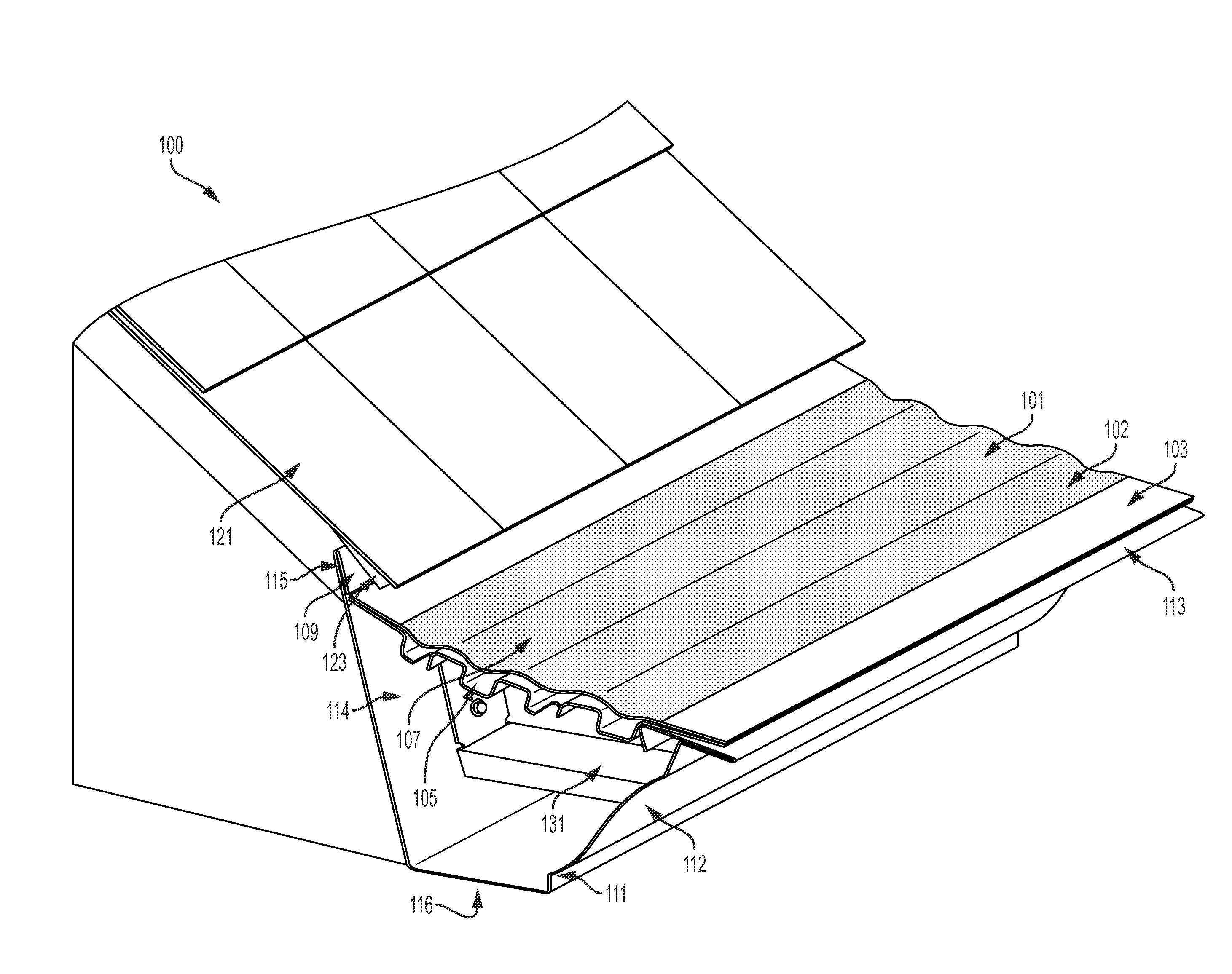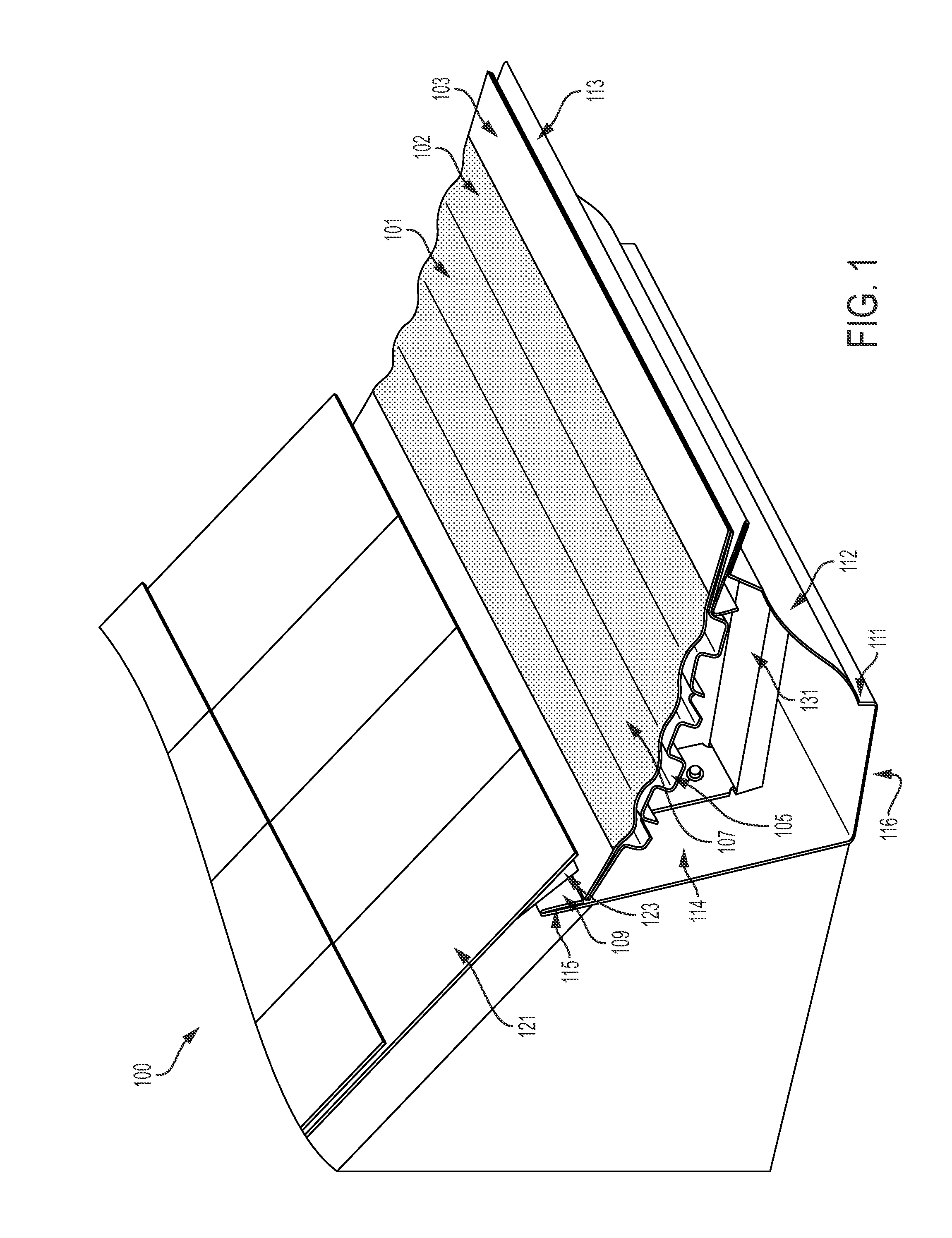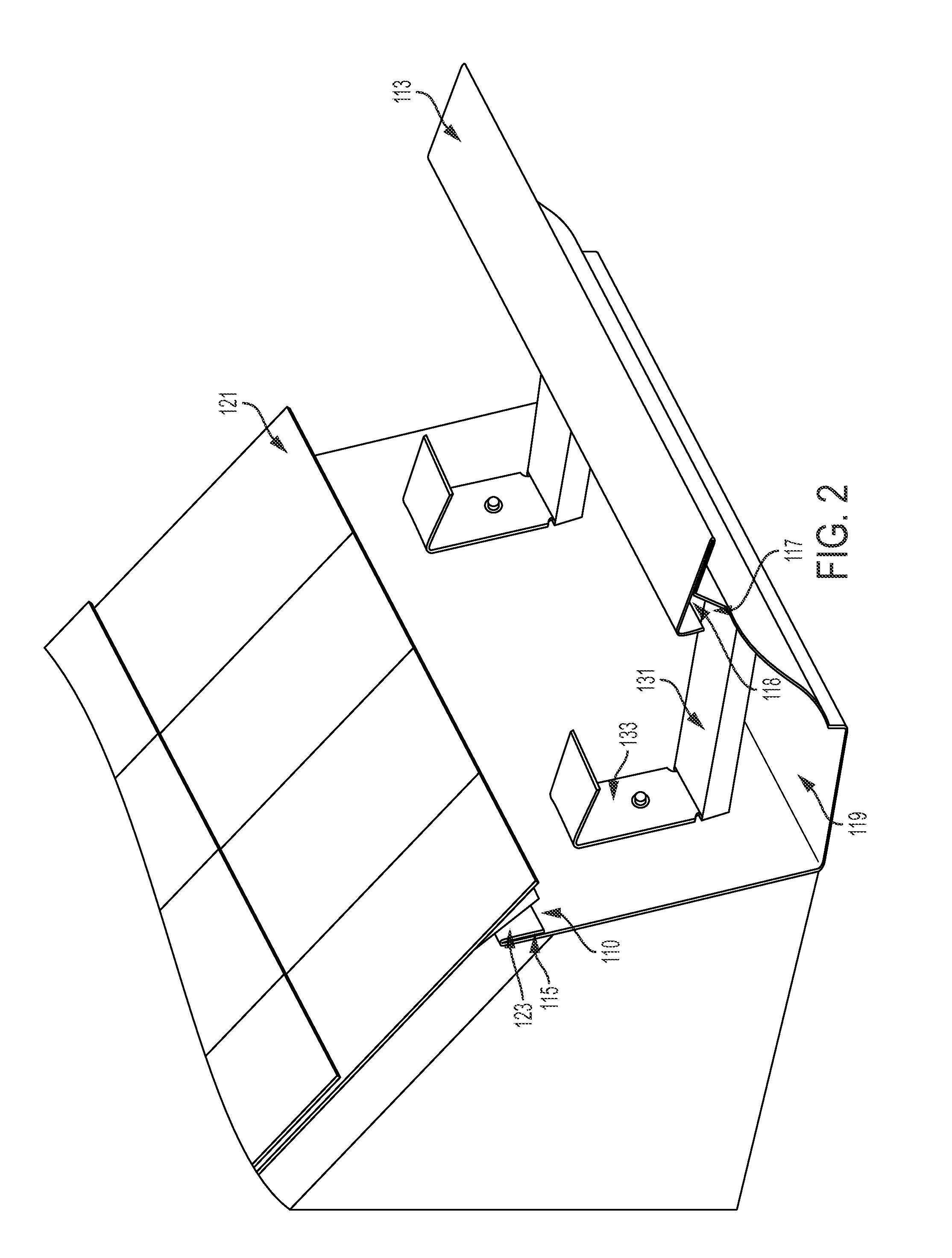Rain gutter system
a gutter system and rain gutter technology, applied in the direction of roof coverings, roofs, constructions, etc., can solve the problems of damage to the sealing integrity of the roof, inadequate water collection, debris to collect thereon, etc., to reduce the movement of the gutter system, efficiently penetrate the mesh, and efficiently make its course
- Summary
- Abstract
- Description
- Claims
- Application Information
AI Technical Summary
Benefits of technology
Problems solved by technology
Method used
Image
Examples
Embodiment Construction
[0050]A preferred rain gutter system, including a gutter, hanger and debris cover, and a method of manufacturing the gutter and the debris cover (panel) are described. In the following description, for the purposes of explanation, numerous specific details are set forth in order to provide a thorough understanding of the preferred embodiments of the invention. It is apparent, however, that the preferred embodiments may be practiced without these specific details or with an equivalent arrangement. In other instances, well-known structures and devices are shown in order to avoid unnecessarily obscuring the preferred embodiments of the invention.
[0051]It is intended that the gutter system provided herein may be installed as original equipment or as a retrofit application, either as a complete system or utilizing parts of the system disclosed herein. For example, in embodiments, the debris panel may be retrofitted to conventional gutter systems. In further embodiments, the debris panel ...
PUM
 Login to View More
Login to View More Abstract
Description
Claims
Application Information
 Login to View More
Login to View More - R&D
- Intellectual Property
- Life Sciences
- Materials
- Tech Scout
- Unparalleled Data Quality
- Higher Quality Content
- 60% Fewer Hallucinations
Browse by: Latest US Patents, China's latest patents, Technical Efficacy Thesaurus, Application Domain, Technology Topic, Popular Technical Reports.
© 2025 PatSnap. All rights reserved.Legal|Privacy policy|Modern Slavery Act Transparency Statement|Sitemap|About US| Contact US: help@patsnap.com



